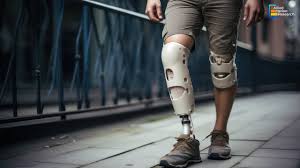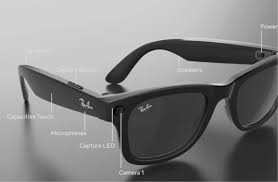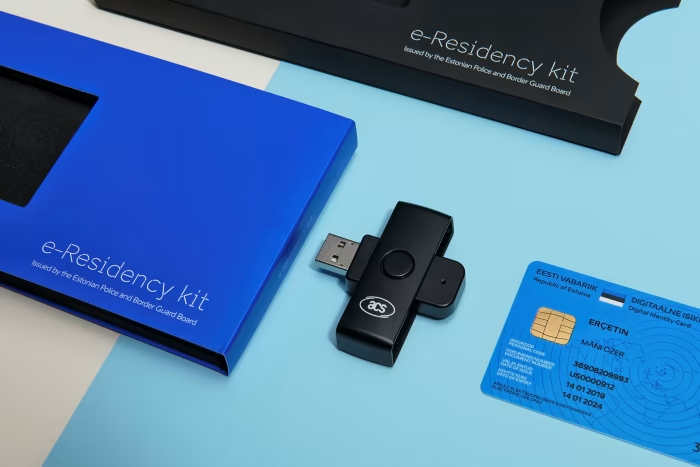AI-Powered Prosthetics: A Leap Toward Natural Movement

A startup has revealed a groundbreaking advancement in prosthetic technology: AI-driven limbs controlled by brain signals. This innovation, unveiled in early 2025, uses neural interfaces to let users move artificial limbs as naturally as their own. It’s a big step forward for amputees, promising better mobility and a more intuitive experience. Let’s break it down and explore what this means for the future of prosthetics.
What Are AI-Powered Prosthetic Limbs?
Traditional prosthetics often rely on muscle signals or manual controls, which can feel clunky and unnatural. The new AI-driven prosthetics, developed by a startup called NeuroTouch, use brain-computer interfaces (BCIs) to translate neural signals into precise movements. This means users can control their prosthetic arm or leg just by thinking about it, like picking up a cup or walking upstairs. The system learns from the user’s brain activity, adapting over time to make movements smoother and more accurate.
Here’s the thing: this technology doesn’t just mimic natural motion—it gets better the more it’s used. Sensors in the prosthetic detect brain signals through non-invasive electrodes placed on the skin or, in some cases, implanted near nerves. These signals are processed by AI algorithms, which learn the user’s unique patterns. For example, a user might think about flexing their wrist, and the prosthetic responds instantly, adjusting grip strength for delicate tasks like holding a pencil.
How It Works
- Neural Interface: Electrodes detect brain or nerve signals from the user’s residual limb or scalp.
- AI Processing: Machine learning algorithms interpret these signals and translate them into specific movements.
- Real-Time Adaptation: The system adjusts to the user’s habits, improving accuracy over time.
- Haptic Feedback: Some models send sensory signals back to the brain, letting users “feel” pressure or texture.
Pros and Cons of AI-Powered Prosthetics
| Pros | Cons |
|---|---|
| Natural, thought-controlled movement | High initial cost for advanced models |
| Adapts to user’s unique patterns | Requires training period for AI to learn |
| Potential for sensory feedback | Limited availability in some regions |
| Improves mobility for daily tasks | Maintenance and battery life concerns |
This section introduced the concept of AI-powered prosthetics and how they use neural interfaces to enable natural movement. Next, we’ll dive into the startup behind this innovation and what sets it apart.
NeuroTouch: The Startup Behind the Innovation
NeuroTouch, a Toronto-based company founded in 2023, is the driving force behind this technology. Their mission is to make advanced prosthetics affordable and accessible, addressing a major gap in the market. Unlike traditional prosthetics, which can cost upwards of $100,000, NeuroTouch’s AI-powered arm is priced around $8,000, thanks to 3D printing and scalable design. Their recent unveiling in July 2025 showcased a prosthetic arm that achieves 95% motion accuracy across 20 degrees of freedom, allowing complex tasks like typing or grasping small objects.
What makes NeuroTouch stand out is their focus on user-centered design. They’ve collaborated with amputees to refine the technology, ensuring it meets real-world needs. For instance, their prosthetic uses forehead electrodes for non-invasive control, making it easier for users to adopt without surgery. A post on X by @chelseyydodd on July 14, 2025, highlighted this, noting the arm’s ability to handle multi-grip tasks in daily life with impressive precision.
Why NeuroTouch Matters
- Affordability: Priced significantly lower than competitors, making advanced prosthetics accessible.
- Scalability: 3D printing allows custom fits, especially for growing children.
- User Feedback: Developed with input from amputees for practical, everyday use.
- Non-Invasive Options: Forehead electrodes reduce the need for invasive implants.
This section covered NeuroTouch’s role in advancing affordable, user-friendly prosthetics. Now, let’s look at how neural interfaces make this technology possible.
Neural Interfaces: The Brain-to-Limb Connection
Neural interfaces are the backbone of this technology. They act like a bridge between the brain and the prosthetic, translating thoughts into actions. Here’s how it works: when a user thinks about moving their arm, the brain sends signals through nerves. Electrodes—either on the skin or implanted—pick up these signals. The AI then decodes them, telling the prosthetic to move in the desired way, like bending an elbow or closing a fist.
The real breakthrough is the AI’s ability to learn. Over time, it recognizes patterns in the user’s brain signals, reducing errors and speeding up responses. A study from the University of Chicago in January 2025 showed that neural interfaces can deliver stable tactile feedback, letting users feel sensations like pressure or texture. This is huge—imagine feeling the warmth of a coffee mug through a prosthetic hand.
Challenges of Neural Interfaces
| Challenge | Solution |
|---|---|
| Signal noise from muscles or skin | Advanced AI filters improve accuracy |
| Invasive implants carry risks | Non-invasive options like forehead electrodes |
| Long training periods for users | AI adapts quickly, reducing learning curve |
| High cost of development | 3D printing and scalable tech lower prices |
This section explained how neural interfaces enable thought-controlled prosthetics and their challenges. Next, we’ll explore the benefits for users in daily life.
Benefits for Amputees: A New Level of Freedom
For the 40 million amputees worldwide, this technology is a game-changer. Traditional prosthetics often limit dexterity, making tasks like tying shoelaces or cooking frustrating. AI-powered limbs offer more natural control, letting users perform complex movements with ease. For example, a user could pick up a grape without crushing it or climb stairs with a natural gait.
Sensory feedback is another big win. NeuroTouch’s prosthetics, as noted in a July 2025 X post by @chelseyydodd, allow users to distinguish textures in three out of five test subjects. This means users can feel the difference between a soft blanket and a rough towel, making daily interactions more intuitive. It also reduces the mental effort needed to use a prosthetic, as the AI handles much of the fine-tuning.
The affordability factor can’t be overstated. With prices as low as $8,000, NeuroTouch’s prosthetics are within reach for more people, especially in developing countries where access to advanced prosthetics is limited. This aligns with efforts by organizations like Robobionics, which focus on making prosthetics accessible to all economic backgrounds.
Real-Life Impact
- Daily Tasks: Users can cook, write, or play sports with greater ease.
- Emotional Boost: Natural movement reduces frustration and boosts confidence.
- Accessibility: Lower costs open doors for more amputees globally.
This section highlighted how AI prosthetics improve daily life for amputees. Next, we’ll look at the challenges and ethical concerns surrounding this technology.
Challenges and Ethical Concerns
Despite the promise, there are hurdles. The technology requires a training period—about five minutes per session—for the AI to learn a user’s brain signals. This can be daunting for some, especially older users or those with limited access to training facilities. Maintenance is another issue; prosthetics need regular updates and battery replacements, which can be costly over time.
Ethical concerns are also front and center. Data privacy is a big one—prosthetics collect sensitive neural data, raising questions about security. Who owns this data, and how is it protected? Another issue is accessibility. While NeuroTouch’s pricing is lower, $8,000 is still a lot for many, especially without insurance coverage. There’s also the question of whether these prosthetics could create a divide between those who can afford them and those who can’t, as noted in a Financial Times article on April 14, 2025.
Key Ethical Considerations
| Issue | Implication |
|---|---|
| Data Privacy | Neural data could be hacked or misused |
| Accessibility | High costs may exclude low-income users |
| Over-Reliance | Users might depend too heavily on tech |
| Ethical Design | Must involve amputees in development |
This section outlined the challenges and ethical issues of AI prosthetics. Finally, we’ll look at what’s next for this technology.
The Future of AI Prosthetics
The future looks bright but complex. By 2030, experts predict prosthetics will feel almost indistinguishable from natural limbs, thanks to advances in neural interfaces and AI. Non-invasive BCIs are improving, which could eliminate the need for surgical implants, making the technology safer and more accessible. Researchers are also working on integrating prosthetics with the Internet of Things (IoT), allowing devices to communicate with smart homes or workplaces for enhanced functionality.
However, scaling this technology will require collaboration. Governments, startups, and nonprofits must work together to lower costs and improve distribution. NeuroTouch is already partnering with universities and medical labs to refine their designs, and their focus on 3D printing could make prosthetics even cheaper. The goal is clear: create prosthetics that not only restore function but also empower users to live fuller lives.
This section explored the future potential and collaborative needs for AI prosthetics. It wraps up the article by looking ahead while grounding the discussion in current realities.





